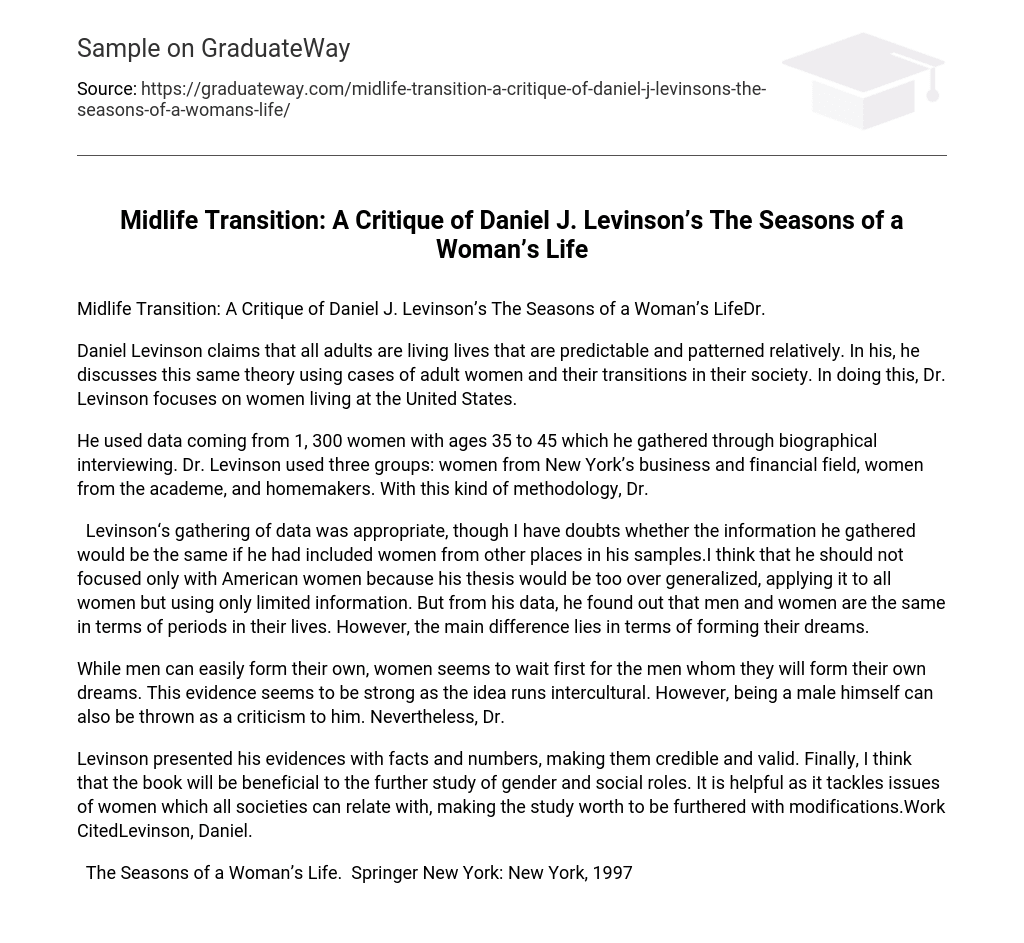Daniel Levinson claims that all adults are living lives that are predictable and patterned relatively. In his, he discusses this same theory using cases of adult women and their transitions in their society. In doing this, Dr. Levinson focuses on women living at the United States. He used data coming from 1, 300 women with ages 35 to 45 which he gathered through biographical interviewing. Dr. Levinson used three groups: women from New York’s business and financial field, women from the academe, and homemakers. With this kind of methodology, Dr.
Levinson‘s gathering of data was appropriate, though I have doubts whether the information he gathered would be the same if he had included women from other places in his samples.I think that he should not focused only with American women because his thesis would be too over generalized, applying it to all women but using only limited information. But from his data, he found out that men and women are the same in terms of periods in their lives. However, the main difference lies in terms of forming their dreams.
While men can easily form their own, women seems to wait first for the men whom they will form their own dreams. This evidence seems to be strong as the idea runs intercultural. However, being a male himself can also be thrown as a criticism to him. Nevertheless, Dr. Levinson presented his evidences with facts and numbers, making them credible and valid. Finally, I think that the book will be beneficial to the further study of gender and social roles. It is helpful as it tackles issues of women which all societies can relate with, making the study worth to be furthered with modifications.Work CitedLevinson, Daniel. The Seasons of a Woman’s Life.
References
- Springer New York: New York, 1997





